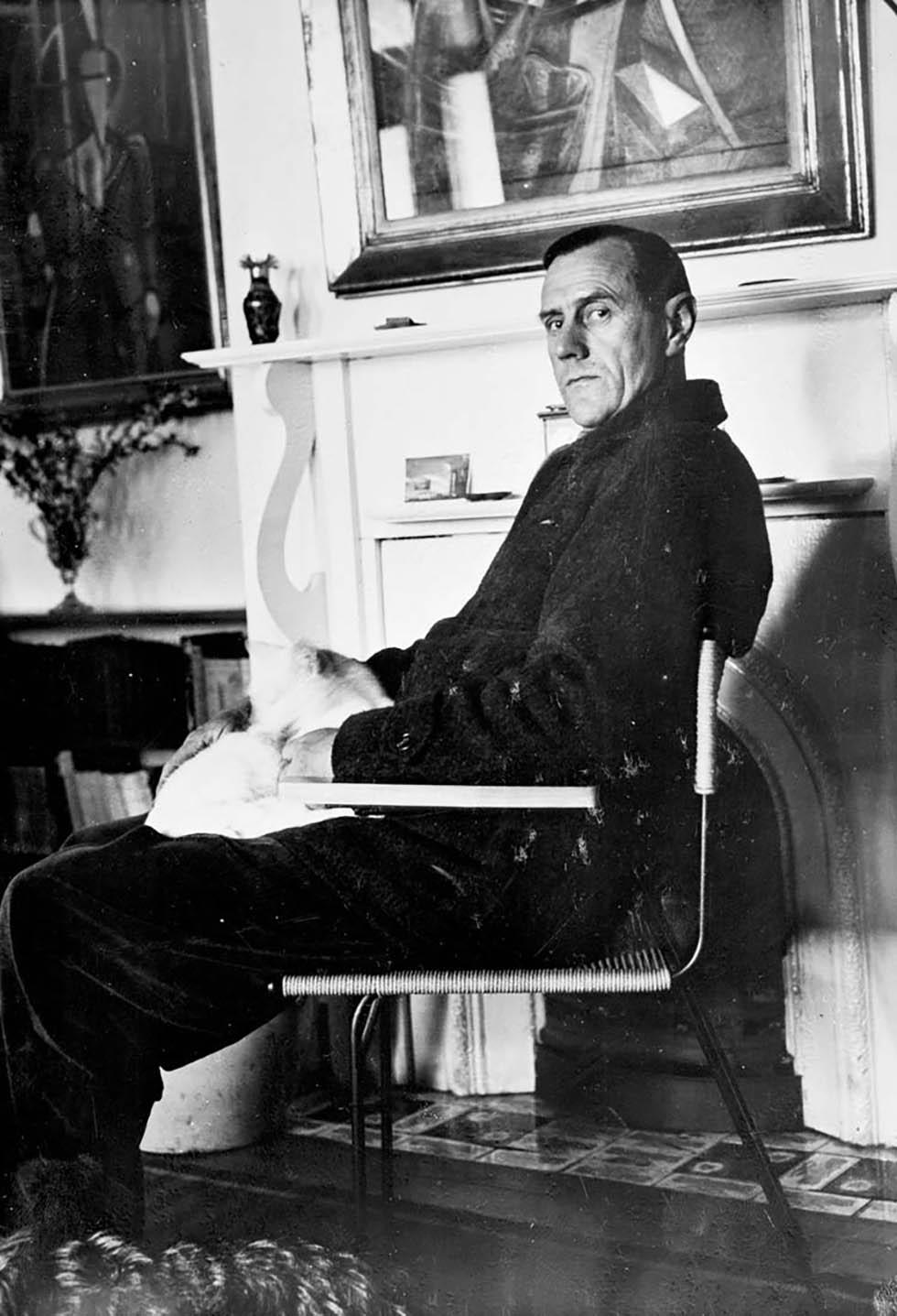


About this record
This posed black-and-white photograph shows Patrick White, Australian writer and Nobel Laureate in Literature. The photograph depicts White surrounded by works of art in what appears to be a private room, possibly in his home in Castle Hill, New South Wales. He is seated on an angle, directing an unsmiling gaze towards the camera.
Educational value
- Patrick White (1912–90) is known for his significant contribution to Australian literature. His body of work spans 60 years and includes poetry, short stories, plays, novels and non-fiction. He is most recognised for his novel, Voss (1957), which is a story of an obsessive German explorer in 19th-century Australia. This work was conceived during World War II when Hitler was in power in Germany, and was inspired by the story of explorer Ludwig Leichhardt.
- By 1960, White had built a reputation as a writer of great talent, although initially he received more recognition overseas than in Australia. International acclaim greeted the publication of novels such as The Living and the Dead (1941), The Aunt's Story (1948) and The Tree of Man (1955). His first novel, Happy Valley (1939), was published after he had graduated from Cambridge University and first established himself as a writer in London while living on a small income from his wealthy grazier family.
- White's literary work was increasingly acknowledged through the winning of numerous national and international awards including the inaugural Miles Franklin award in 1957 for Voss and a second Miles Franklin award in 1961 for Riders in the Chariot, culminating in 1973 when he became the first Australian awarded the Nobel Prize in Literature. He was made Australian of the Year in 1973 and used this opportunity to reflect on the state of the nation.
- White is acknowledged as the writer who brought Australian literature to international attention. In awarding White the Nobel Prize, the Swedish Academy claimed that the author had introduced the continent of Australia to the world of literature. White used the prize money to establish the Patrick White Literary Award to help Australian writers achieve due recognition.
- White's emotional isolation as a child in country Australia, his introduction to abstract art in London, his wartime experiences and his homosexuality informed his writing and shaped his personality. During his childhood he endured chronic asthma, and was sent by his parents to boarding schools in New South Wales, then London. He met his lifelong partner, Manoly Lascaris, while working as a military intelligence officer during World War II.
Acknowledgments
Learning resource text © Education Services Australia Limited and the National Archives of Australia 2010.
Need help with your research?
Learn how to interpret primary sources, use our collection and more.

